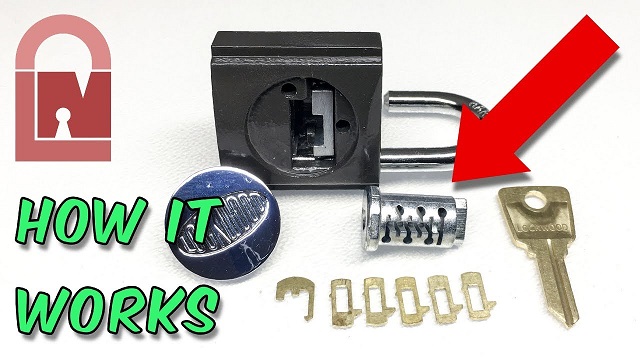Wafer Tumbler Locks - What they are, how they work
2022-12-06 08:51

This lock is often mistaken for a Disc Tumbler lock, but they are actually very different. The Wafer Tumbler lock uses flat wafers to prevent the locking mechanism from being operated. The flat wafer inside just gives way to the right key set. Pin Tumbler locks are similar to Wafer Tumbler locks in that their mechanisms operate on a similar principle. But the waffle tumbler is different because the waffle in its lock is usually a single piece, unlike the pin peg, where the dowel has multiple parts.
How does the chip lock work?
A range of flat wafers can be found in cylindrical wafers. Their purpose is to hold cylindrical plugs in place. These wafers are usually spring-loaded and secured in an upright slot within the plug. This arrangement causes the wafers to protrude into wide slots that are opposite each other in diameter and located in the housing of the lock. The protruding disc stuck in the wide slot prevents the plug from rotating until the correct key is inserted to unlock it.
If the correct key is not inserted, the disc will be held down by the spring in the lower groove of the outer cylinder. Inserting the correct key will lift the chip out of the lower slot, but not high enough to get it into the upper slot of the cylinder. Once the chip is released, the key and chip can be rotated to unlock or lock the door.
Chip lock design: The basic wafer cup found on the door of a London home usually consists of the following parts;
CAM: Located behind the plug, it activates the bolt to unlock or lock.
Springs: These are set on the sides of the wafers to eject them in the direction of the cylinder.
Sheet: The sheet is a flat piece of metal located in the lock plug and is the most critical component of the lock. Wafers can vary in size and protrusion.
Cylinder: This part of the lock is where the stopper is located. Its function is to stop the plug from spinning whenever the wafer is inserted into it.
Plug: This is the internal part of the lock that turns when the correct key is inserted. It controls the bolt mechanism of the lock as it turns.
Type of chip lock design: The design of a Wafer Tumbler lock usually depends on its manufacturer. But the most common types of chip locks found in London homes are single - and double-toothed.
What is the history of Wafer tumbler locks?
In 1868, Philo Felter of the United States received a patent for the first chip lock. But soon after, Hiram S. Shepardson introduced a single tooth steel flat key for operating an improved version of the chip lock. In 1878, Yale acquired Shepardson's Lock Company and Felter's Lock Manufacturing Company. After that, there were no major advances or improvements in Wafer cup technology. It was not until 1913 that Emil Christoph invented another type of round pin lock that used a double-toothed key. Briggs & Stratton patented the switch for their wafer cup in 1919. Their design also uses a double-toothed key. Five years later, Edward N. Jacobi of Briggs & Stratton filed a patent for a single tooth five-piece pin lock. The lock was first recorded on the 1924 Hupp 8 car.
In 1929, Josiah Parkes & Sons of Willenhall brought the Wafer cup to the British market and supplied it to Wilmot Breeden. Wilmot Breeden's version was later copied by British competitors.
We hope this will help. If you would like any additional information on how to pick a lock for the first time or familiarize yourself with the basics of lock picking, please let us know. For those of you learning how to pick a more difficult or complex padlock, please contact us for more information. We focus on offering Lock Pick Kits for beginners and professional lockpickers because we take lockpickers seriously.
 Promotion: 5% Discount Code: 5vip
Promotion: 5% Discount Code: 5vip